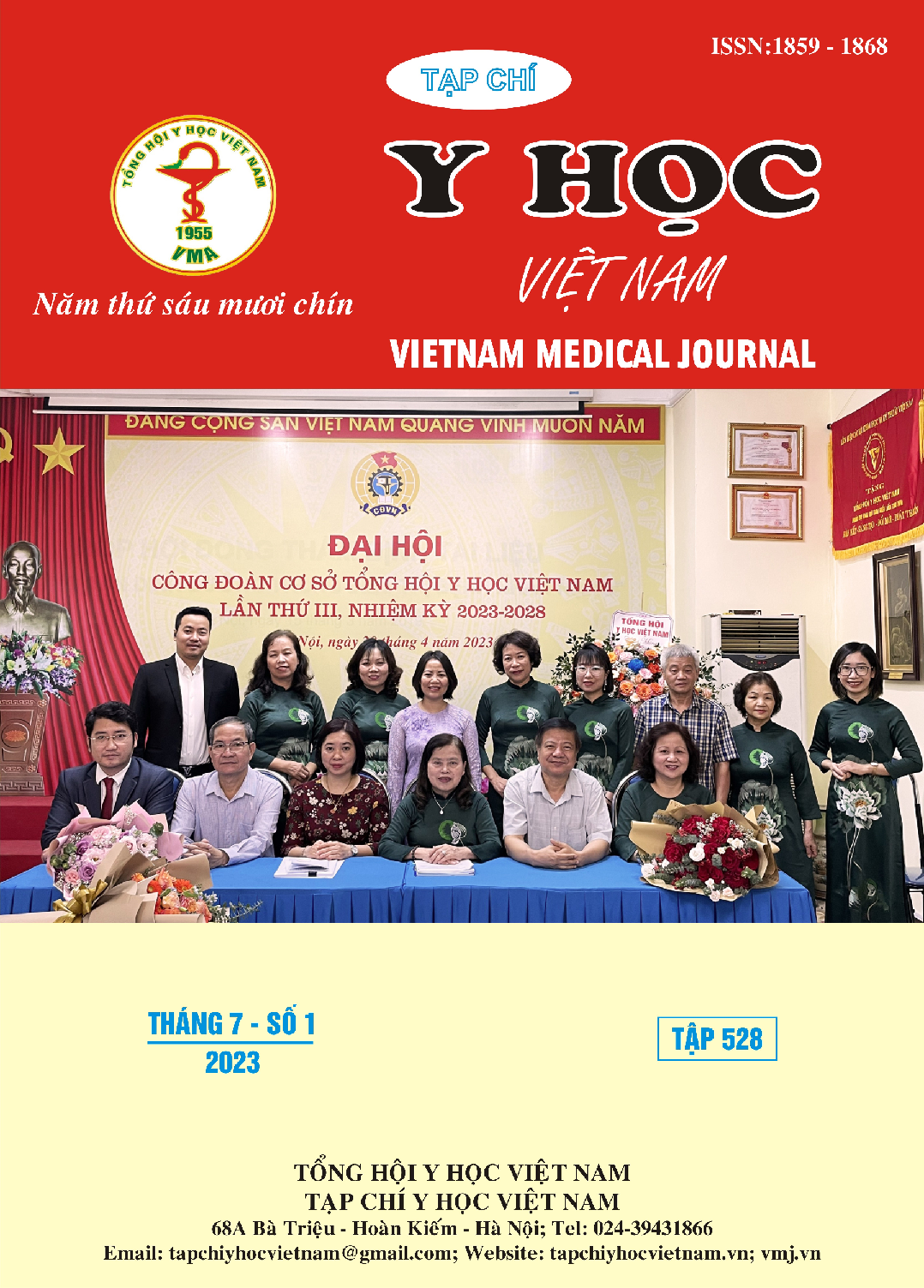VALUE OF MAGNETIC RESONANCE IN THE DIAGNOSIS OF JOINT TUBERCULOSIS
Main Article Content
Abstract
Purposes: To evaluate the value of MRI in the diagnosis of tuberculous arthritis. Material and methods: Analysis of MRI imaging characteristics of 07 cases of tuberculous arthritis with ultrasound guided synovial biopsy and confrontation the MRI characteristics with biopsy results. Results: From September 2020 to October 2022, 7 patients with tuberculous arthritis had MRI scan and then underwent the ultrasound guided synovial biopsy at Hanoi Medical University Hospital. Among them are 01 shoulder joint, 1 elbow joint, 1 wrist joint, 2 hip joints and 2 ankle joints. The mean age of the patients was 60±15.5, the highest was 75 years old, the lowest was 35 years old. There are 5 female patients and 2 male patients. The MRI shows that the average synovial thickness was 8.9±6.7mm, the largest thickness was 24mm, the smallest was 5.6mm. The synovial thickening was regular and strongly Gadolinium enhancement in all cases. Synovial fluid was only present in 1/7 cases. Bone marrow erosion and edema were seen in 6/7 cases. There were no cases of bone chips. Edema with soft tissu abscess was observed in 3/6 cases. Biopsy analysis results showed that all samples had negative bacterial cultures. There were 6 patients positive on histopathological analysis, 4 patients positive for TB PCR. Conclusion: The most common findings on MRI of tuberculous arthritis were bone marrow erosion and edema. Other signs were less common and may be seen in pyogenic bacterial infectious arthritis
Article Details
Keywords
Magnetic resonance, tuberculosous arthritis, synovial membrane.
References
2. Shalini Agarwal, Lalit Mohan, Preeti Lamba, Sanjay Kumar, Magnetic resonance imaging features of large joint tuberculous arthritis. Indian Journal of Musculoskeletal Radiology; 3(2); 82-87doi: 10.25259/ IJMSR_11_2021
3. Gerlag DM, Tak PP. How useful are synovial biopsies for the diagnosis of rheumatic diseases? Nat Rev Rheumatol. 2007;3(5):248-249. doi: 10.1038/ncprheum0485.
4. Parker RH, Pearson CM. A simplified synovial biopsy needle. Arthritis & Rheumatism: Official Journal of the American College of Rheumatology. 1963; 6(2):172-176.
5. Kelly S, Humby F, Filer A, et al. Ultrasound-guided synovial biopsy: a safe, well tolerated and reliable technique for obtaining high-quality synovial tissue from both large and small joints in early arthritis patients. Annals of the rheumatic diseases. 2015;74(3):611-617.
6. Sawlani V, Chandra T, Mishra RN, Aggarwal A, Jain UK, Gujral RB. MRI features of tuberculosis of peripheral joints. Clin Radiol 2003 ;58 :755-62.
7. Sitt J, Griffith JF, Lai FM, et al. Ultrasound-guided synovial Tru-cut biopsy: indications, technique, and outcome in 111 cases. European radiology. 2017;27(5):2002-2010.
8. Prakash M, Gupta P, Dhillon MS, Sen RK, Khandelwal N. Magnetic resonance imaging findings in tubercular arthritis of elbow. Clin Imaging 2016;40:114-8.
9. Choi JA, Koh SH, Hong SH, Koh YH, Choi JY, Kang HS. Rheumatoid arthritis and tuberculous arthritis : Differentiating MRI features. AJR Am J Roentgenol 2009 ;193 :1347-53.
10. Graif M, Schweitzer ME, Deely D, Matteucci T. The septic versus nonseptic inflamed joint: MRI characteristics. Skeletal radiology. 1999 ; 28(11):616-620.


